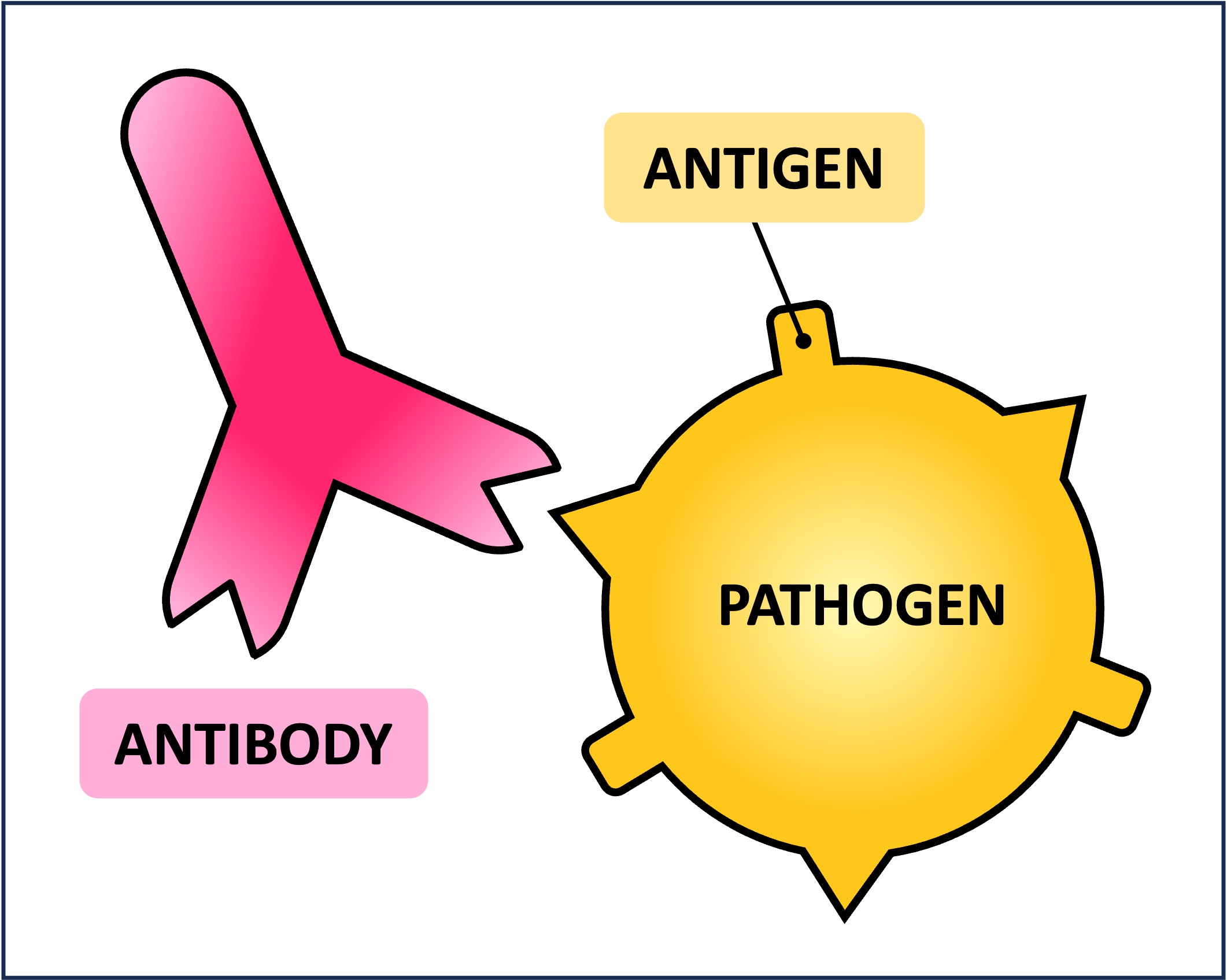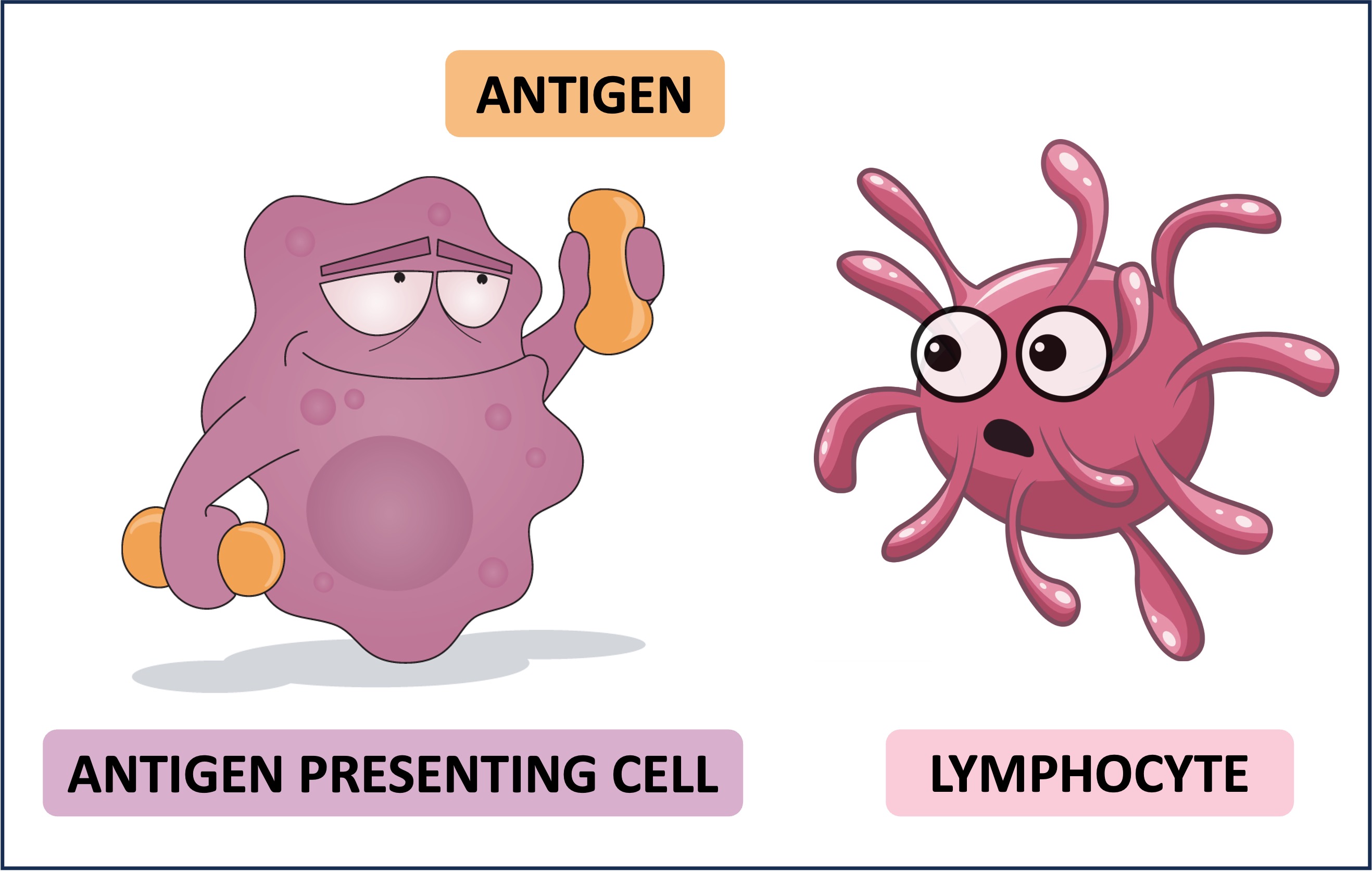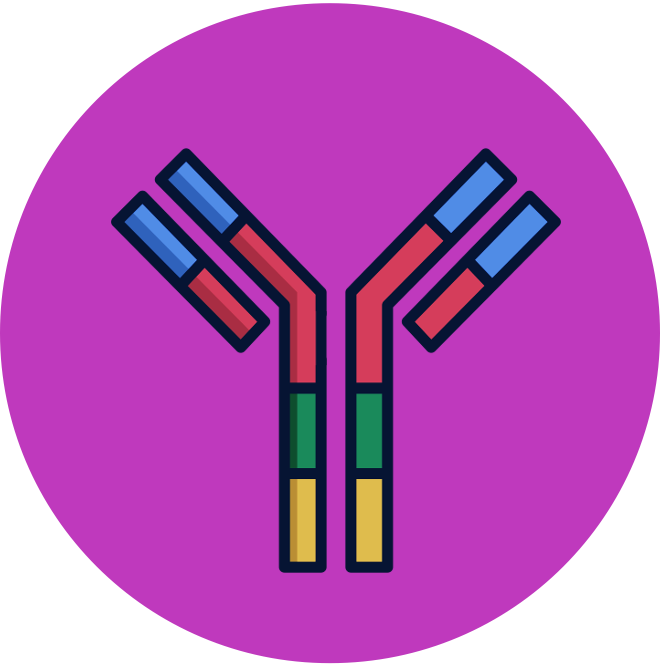

Antigens
The immune system has the capacity to distinguish between body cells (‘self’) and foreign materials (‘non-self’)
-
It will react to the presence of foreign materials with an immune response that eliminates the intruding material from the body
The innate immune response will only respond to broad categories of pathogen by detecting pathogen-associated molecular patterns (PAMPs)
-
Phagocytic leukocytes will engulf these pathogens and break them down within their lysosomes
The adaptive immune response will respond to highly specific molecular markers usually located on the outer surface of the pathogen
-
These non-self markers are called antigens and trigger the production of antibodies by lymphocytes
An example of antigens include the glycoproteins present on the surface of red blood cells (ABO blood groups)
-
Individuals will produce antibodies when transfused with a different blood type, leading to healt complications
Antigenic Determinants

Lymphocytes are the cells in the adaptive immune system that are capable of recognising specific antigens
-
While some lymphocytes circulate within the bloodstream, most reside within the lymphatic system
When a phagocytic leukocyte engulfs and destroys a pathogen, it may present the pathogenic fragments on its surface – becoming an antigen presenting cell
-
The antigen presenting cell will drain into the lymphatic system and be filtered at select points called lymph nodes
-
Lymph nodes contain large numbers of lymphocytes that will cooperate upon antigen presentation to produce specific antibodies
Antigen Presentation





